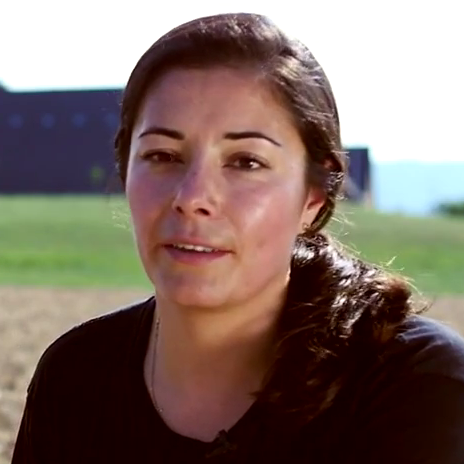Climate & Environment
Pollution
Water Quality
Toxic Pollutants & Hazardous Substances
Post-Doctoral Fellowships
Switzerland
2014.10.31
Dynamics of the re-mobilisation of silver particles in porous media by chemical and physical perturbations: role of solution chemistry and flow velocity
The fate and transport of colloid and nanoparticle contaminants in environmental porous media is a topic of significant interest because soils are the primary filter for water resources. Traditionally, soils are managed as natural filters that efficiently and permanently remove particles from infiltrating groundwater or landfill leachate.
Nevertheless, disturbances to the flow hydrodynamics or solution chemistry can induce significant colloid and nanoparticle remobilization in porous media. Intermittent high-rate well pumping episodes and rain/irrigation infiltration events can produce such physico-chemical disturbances, therefore management strategies that control soil-water flow rates and chemistry in the field can help minimize groundwater contamination risks. This project will investigate the dynamics of particle remobilization by coupled physical and chemical disturbances through a combination of laboratory transport experiments and numerical simulations. Experimental data will be gathered
using a novel 3-Dimensional Particle Tracking imaging technique. With this method, Lagrangian trajectories of numerous individual particles can be recorded simultaneously as they move through the porous medium, become deposited, and subsequently get remobilized following systematically executed disturbances. A novelty of this approach is the use of a transparent soil surrogate that permits optical access to all pore-spaces of the medium, which is impossible in real soils. Numerical simulations will combine particle attachment and detachment kinetics with near-solid surface hydrodynamic forces derived from the expected flow field to describe transport and remobilization of silver particles in a mechanistically correct manner. The objectives of this work are to: i) quantitatively understand the effect of physical and chemical disturbances on remobilization of particles in contaminated soils, ii) develop a predictive tool that can accurately forecast the magnitude and duration of particle remobilization occurrences under a broad range of disturbances, and iii) ultimately use this information to regulate land management activities that affect particle remobilization. From a fundamental perspective, the new insights gained from this work will elucidate remobilization kinetics and space-dependent conditions that make porous media susceptible to release colloids and nanoparticles. From a practical application, this knowledge can be used to develop land management strategies that minimize physico-chemical disturbances known to inadvertently mobilize contaminants into flowing groundwater.
Nevertheless, disturbances to the flow hydrodynamics or solution chemistry can induce significant colloid and nanoparticle remobilization in porous media. Intermittent high-rate well pumping episodes and rain/irrigation infiltration events can produce such physico-chemical disturbances, therefore management strategies that control soil-water flow rates and chemistry in the field can help minimize groundwater contamination risks. This project will investigate the dynamics of particle remobilization by coupled physical and chemical disturbances through a combination of laboratory transport experiments and numerical simulations. Experimental data will be gathered
using a novel 3-Dimensional Particle Tracking imaging technique. With this method, Lagrangian trajectories of numerous individual particles can be recorded simultaneously as they move through the porous medium, become deposited, and subsequently get remobilized following systematically executed disturbances. A novelty of this approach is the use of a transparent soil surrogate that permits optical access to all pore-spaces of the medium, which is impossible in real soils. Numerical simulations will combine particle attachment and detachment kinetics with near-solid surface hydrodynamic forces derived from the expected flow field to describe transport and remobilization of silver particles in a mechanistically correct manner. The objectives of this work are to: i) quantitatively understand the effect of physical and chemical disturbances on remobilization of particles in contaminated soils, ii) develop a predictive tool that can accurately forecast the magnitude and duration of particle remobilization occurrences under a broad range of disturbances, and iii) ultimately use this information to regulate land management activities that affect particle remobilization. From a fundamental perspective, the new insights gained from this work will elucidate remobilization kinetics and space-dependent conditions that make porous media susceptible to release colloids and nanoparticles. From a practical application, this knowledge can be used to develop land management strategies that minimize physico-chemical disturbances known to inadvertently mobilize contaminants into flowing groundwater.
To add or modify information on this page, please contact us at the following address: community.research@axa.com

Veronica
MORALES
Institution
Eidgenössische Technische Hochschule Zürich
Country
Switzerland
Nationality
American
Related articles
Climate & Environment
Climate Change
Pollution
Aerosols & Particulate Matters
Public Health & Health Policy
Toxic Pollutants & Hazardous Substances
Post-Doctoral Fellowship
Greece
2023.06.01
Insight in Dust Fine-Mode to Mitigate Health Hazards in a Changing Climate
Expected start date:June-2023 In late-April/early-May 2022, a surge of remarkable dust storms ravaged Iraq, resulted- according to the World Health... Read more

Emmanouil
PROESTAKIS





.thumbnail.jpg)
